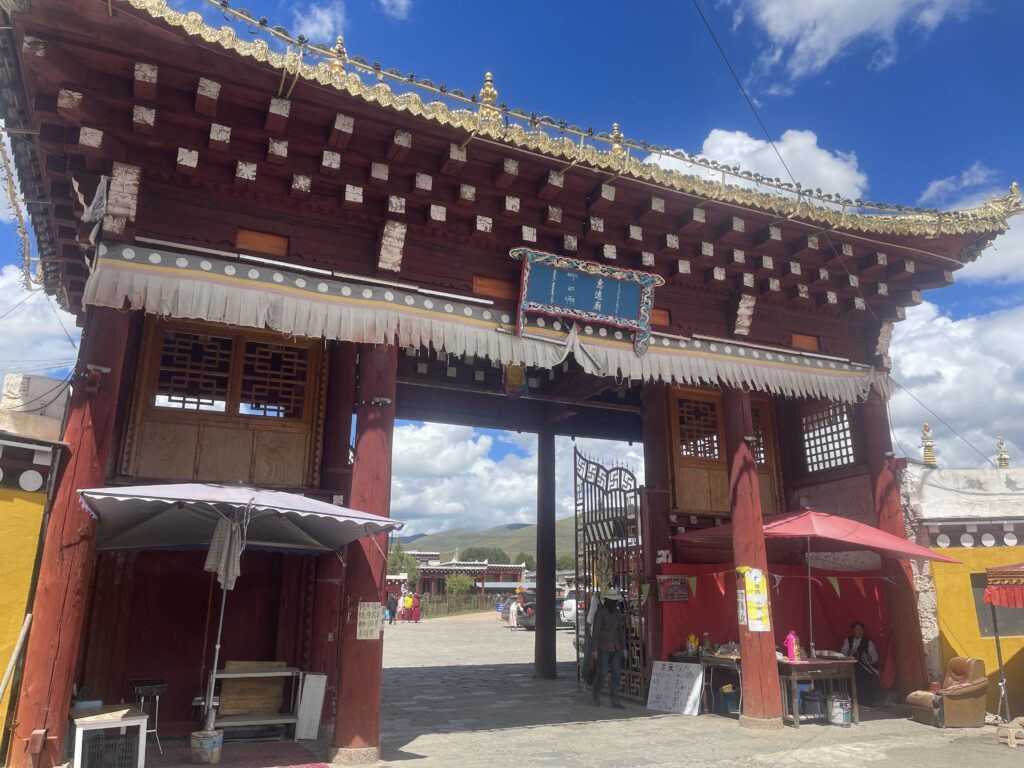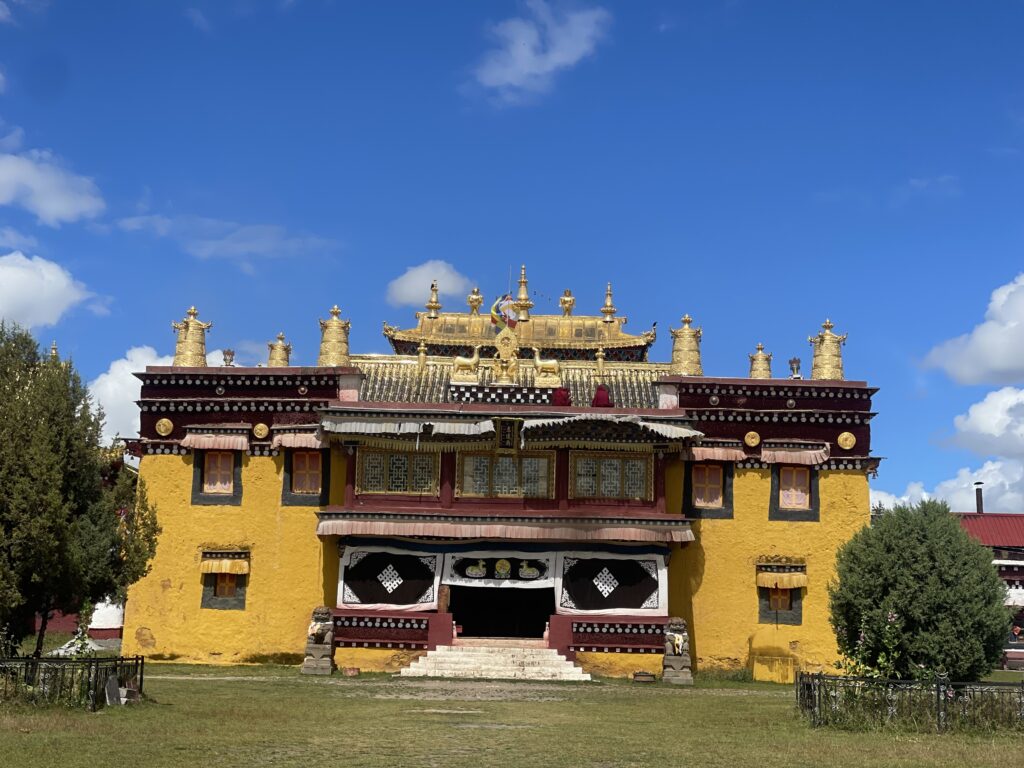
Garthar Monastery or Huiyuan Temple (Huiyuan Monastery, 惠远寺) in Chinese is a historic Tibetan Buddhist monastery located in the Garzê Tibetan Autonomous Prefecture, Sichuan Province, China. It holds both religious and cultural significance, particularly within the Tibetan Buddhist community, and is nestled in a serene valley with scenic views of the surrounding mountains. Here’s an overview of Huiyuan Temple and its key features:

Historical Importance:
Huiyuan Temple was originally built in 1729 during the Qing Dynasty by the Chinese government to strengthen relations with Tibetans and to protect the border regions of the empire. It was constructed with both religious and political motivations in mind, serving as a place of worship and as a center for the local Tibetan community.
The monastery played an important role in Tibetan Buddhism and became a center of influence for Tibetan culture in the region. It is closely linked to the history of the 7th Dalai Lama, who resided here for a time.
Tibetan Buddhist Architecture:
The monastery’s architecture is a blend of traditional Tibetan style and elements reflecting its Qing Dynasty origins. The main hall is built in the style typical of Tibetan Buddhist temples, with a multi-tiered roof, prayer flags, and ornately decorated walls.
The temple’s interior is home to many precious Buddhist artifacts, statues, and thangkas (Tibetan Buddhist paintings). Visitors can see intricately carved wooden columns, murals depicting Buddhist deities, and ceremonial objects used in rituals.
Connection to the Dalai Lama:
Huiyuan Temple has a special connection to Tibetan Buddhism’s spiritual leader, the Dalai Lama. The 7th Dalai Lama, Kelzang Gyatso, spent part of his early years at Huiyuan Monastery during a tumultuous time in Tibetan history. His presence elevated the status of the temple, making it an important center for religious and political gatherings during that era.
The temple became a refuge for the Dalai Lama and other high-ranking lamas, reinforcing its significance in Tibetan Buddhism and its role as a spiritual center.
Pilgrimage Site:
Huiyuan Temple is an important pilgrimage site for Tibetan Buddhists. Many devout followers visit the temple to pray and seek blessings from the resident monks and lamas.
The temple houses a sacred relic believed to have been touched by the 7th Dalai Lama, which attracts pilgrims who revere the Dalai Lama lineage.
Scenic Surroundings:
The temple is located in a tranquil valley near the town of Daofu, surrounded by beautiful natural landscapes, including rolling hills, forests, and rivers. The peaceful environment makes it an ideal location for meditation and spiritual practice.
The area around the temple is a popular destination for nature lovers and hikers, offering stunning views of the Tibetan Plateau and the nearby mountains.
Cultural and Religious Festivals:
Huiyuan Temple hosts various Tibetan Buddhist ceremonies and festivals throughout the year. During these festivals, monks and lamas perform traditional Buddhist rituals, including chanting, music, and religious dances (Cham). One of the most notable festivals is Losar, the Tibetan New Year, which is celebrated with great fervor.
These festivals are opportunities for both locals and visitors to experience Tibetan culture, religion, and communal celebrations.
Tibetan Buddhism and Monastic Life:
Huiyuan Temple is home to a community of Tibetan Buddhist monks who study and practice the teachings of Tibetan Buddhism. Visitors can often observe the daily activities of the monastery, such as prayer sessions, meditation, and the making of traditional Tibetan art, like sand mandalas or butter sculptures.
The temple also serves as a center for learning, where young monks undergo rigorous training in Buddhist philosophy, scripture, and rituals.
Getting There:
Huiyuan Temple is located near the town of Daofu in Sichuan’s Garzê Prefecture, about 350 kilometers (217 miles) west of Chengdu. It can be reached by road, usually through scenic mountain routes that offer views of the Tibetan Plateau and other significant sites in the region.
The region’s remote location adds to the temple’s peaceful and spiritual atmosphere, though the journey to Huiyuan Temple offers the added benefit of exploring the beautiful Tibetan landscapes.
Best Time to Visit:
The best time to visit Huiyuan Temple is from May to October, when the weather is milder and the landscape is at its most vibrant. During these months, visitors can enjoy pleasant trekking conditions and participate in the local festivals.
Huiyuan Temple offers a unique combination of spiritual history, Tibetan culture, and natural beauty. It is an important pilgrimage site and a place where visitors can immerse themselves in the peaceful practices of Tibetan Buddhism while exploring the stunning highland scenery of Sichuan’s Tibetan region.
 Tibet World Travel Tibet Tour, Tibet Trip, Tibet Travel, Tibet Train, Tibet Trekking,
Tibet World Travel Tibet Tour, Tibet Trip, Tibet Travel, Tibet Train, Tibet Trekking,
